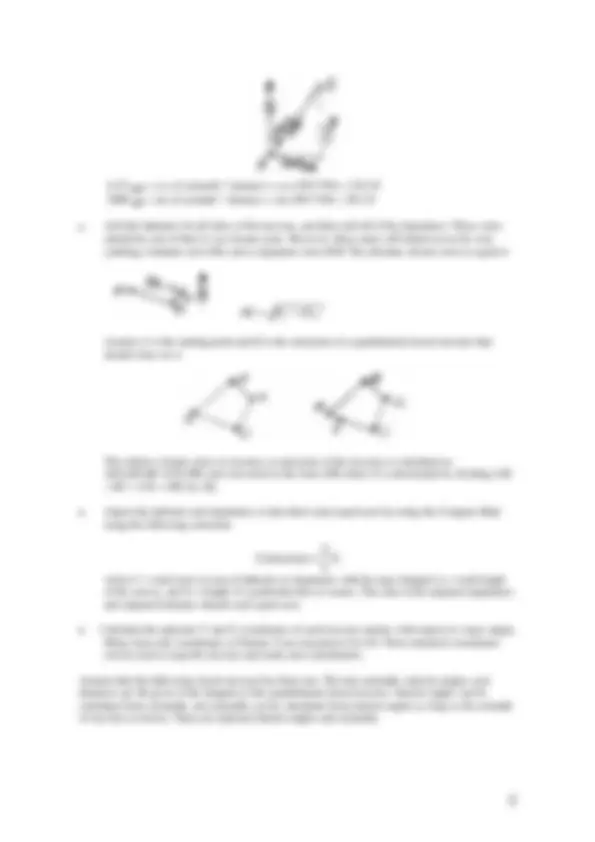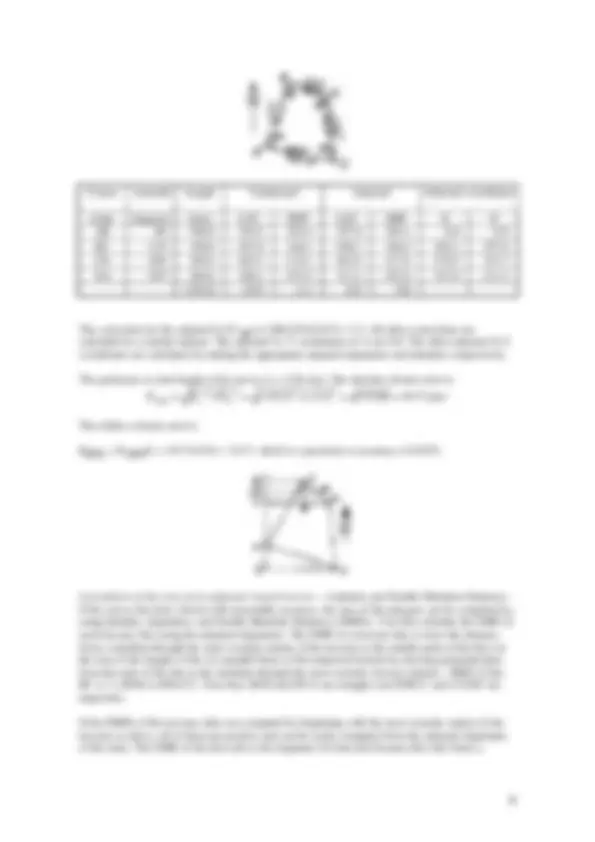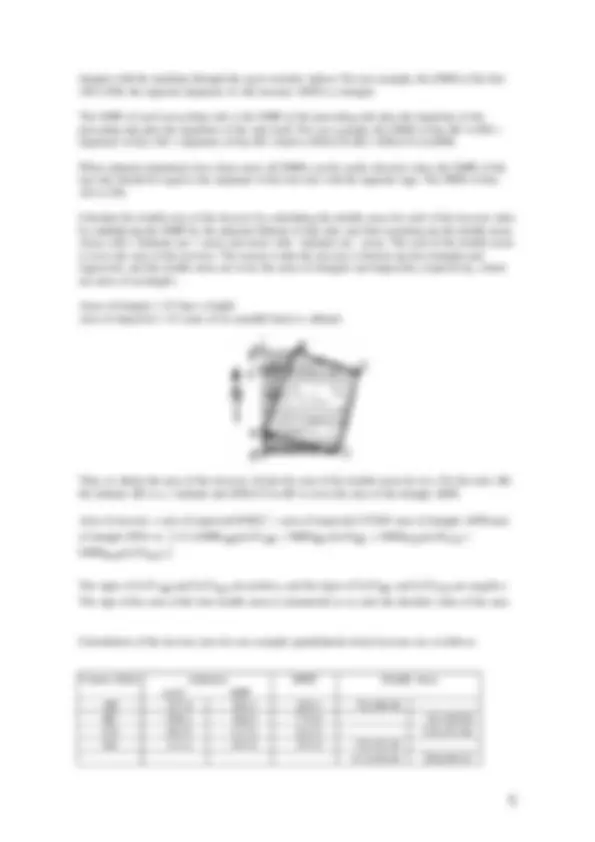





Study with the several resources on Docsity

Earn points by helping other students or get them with a premium plan


Prepare for your exams
Study with the several resources on Docsity

Earn points to download
Earn points by helping other students or get them with a premium plan
Community
Ask the community for help and clear up your study doubts
Discover the best universities in your country according to Docsity users
Free resources
Download our free guides on studying techniques, anxiety management strategies, and thesis advice from Docsity tutors
The concept of traverses, a method used in surveying to find accurate positions of marked stations and calculate areas. It covers open and closed traverses, their uses, and the steps involved in traverse field work and calculations. The document also includes an example of a closed traverse with adjusted azimuths, latitudes, departures, and coordinates.
Typology: Study Guides, Projects, Research
1 / 6

This page cannot be seen from the preview
Don't miss anything!




Gary W. Fowler School of Natural Resources and Environment University of Michigan Ann Arbor, MI 48109 U.S.A.
A traverse is a continuous series of connected lines of known lengths related to one another by known angles. The lengths of the lines are determined by direct measurement of horizontal distances, slope measurement, or by indirect measurement using the methods of stadia or the subtense bar. The line courses run between a series of points are called traverse stations. The angles at the traverse stations, between the lines are measured by tape, transit, theodolite, compass, plane table, or sextant. These angles can be interior angles, deflection angles, or angles to the right. The lengths and azimuths or bearings of each line of the traverse are estimated through field measurements. The lengths are horizontal distances, and the azimuths or bearings are true, magnetic, assumed, or grid.
There are two types or classes of traverses. An open traverse is called a first class traverse. It starts at a point of known or assumed horizontal position with respect to a horizontal datum, and terminates at an unknown horizontal position. Thus, open traverses end without closure. Open traverses are used on route surveys, but should be avoided whenever possible since they cannot be properly checked. Measurements in open traverses should be repeated to minimize mistakes. A closed traverse is called a second class traverse. It starts at a known or assumed horizontal position and terminates at that point (i.e., loop traverse), or it starts at a known horizontal position and terminates at another known horizontal position (i.e., connecting traverses). Both the measured angles and lengths in a closed traverse may be checked.
A known horizontal position is defined by its geographic latitude and longitude, its Y- and X- coordinates on a grid system, or by its location on or in relation to a fixed boundary.
Traverses are used to find accurate positions of a small number of marked stations. From these stations, less precise measurements can be made to features to be located without accumulating accidental errors. Thus, traverses usually serve as control surveys. When drawing construction plans, the stations can be used as beginning points from which to lay out work. When new construction of any kind is to be made, a system of traverse stations in the area must be established and surveyed.
Traverse surveys are made for many purposes to include:
A natural resource professional may need to run a boundary survey for a recreation site, research plot, forest stand, or wildlife habitat area. The shape of the area may be a polygon with 3 or more sides. The boundary may be located in the field as it is surveyed. Then the polygon is drawn on a map sheet with the area in acres being determined for planning purposes. Open traverses may be run to establish preliminary trail and road locations.
An open traverse cannot be checked for accuracy of field measurements as errors or mistakes are not revealed. A closed traverse immediately affords a check on the accuracy of the measured angles. The position closure gives an indication of the accuracy in measuring distances as well as azimuths.
Traverse field work consists of the following steps:
The forward and backward directions for any traverse need to be defined. The order in which measurements are made usually is called the forward direction. Loop traverses should be measured counterclockwise around the loop. The angles of the traverse should be measured clockwise from the backward direction to the forward direction. Most highway surveys and other connecting or open traverses are based on measurement of deflection angles. Either interior or deflection angles can be used for a closed traverse -- we will use interior angles. If angle and distance measurements are done separately, the field notes for each operation will be kept separately. If both measurements are done together, you might want to keep the field notes together.
Station Horizontal distance From To Station
Circle Reading Interior Angle
A-B 100.00 D 0.D (^0) º00' A 100.00 B 1.D (^64) º27' (^64) º27' 91.79 B 1.R (^128) º55' (^64) º28' 291.79 MEAN (^64) º27'30"
You would measure interior angles A, B, C, and D in that order and take field notes for each angle and associated forward distance as described above for angle DAB and line AB.
Traverse calculations include the following:
Course Azimuth Length Unadjusted Adjusted Adjusted coordinates
(side) (degrees) (feet) LAT DEP LAT DEP E N AB (^50) º 396.0 254.5 303.4 257.8 304.1 0.0 0. BC (^123) º 198.0 -107.8 166.1 -106.1 166.4 304.1 257. CD (^204) º 290.4 -265.3 -118.1 -262.9 -117.6 470.5 151. DA (^287) º 369.6 108.1 -353.5 111.2 -352.9 352.9 -111. 1254.0 -10.5 -2.1 0.0 0.
The correction for the adjusted LAT AB is (396/1254)(10.5) = 3.3. All other corrections are calculated in a similar manner. The adjusted X, Y coordinates of A are 0,0. The other adjusted X,Y coordinates are calculated by adding the appropriate adjusted departures and latitudes, respectively.
The perimeter or total length of the survey L = 1254 feet. The absolute closure error is
The relative closure error is
EREL = EABS/L = 10.71/1254 = 1/117, which is a precision or accuracy of 0.85%.
Calculation of the area of an adjusted closed traverse -- Latitudes and Double Meridian Distances - If the survey has been closed with reasonable accuracy, the area of the polygon can be computed by using latitudes, departures, and Double Meridian Distances (DMDs). You first calculate the DMD of each traverse line using the adjusted departures. The DMD of a traverse line is twice the distance from a meridian through the most westerly station of the traverse to the middle point of the line (or the sum of the lengths of the two parallel bases of the trapezoid formed by drawing perpendiculars from the ends of the line to the meridian through the most westerly traverse station). DMD of line BC is 2 x M'M or B'B+C'C. Note that AB'B and DD'A are triangles and B'BCC' and C'CDD' are trapezoids.
If the DMDs of the traverse sides are computed by beginning with the most westerly station of the traverse as above, all of them are positive and can be easily computed from the adjusted departures of the sides. The DMD of the first side is the departure for that side because this side forms a
triangle with the meridian through the most westerly station. For our example, the DMD of the line AB is B'B, the adjusted departure of AB, because AB'B is a triangle.
The DMD of each succeeding side is the DMD of the preceding side plus the departure of the preceding side plus the departure of the side itself. For our example, the DMD of line BC is B'B + departure of line AB + departure of line BC which is B'B+C'E+EC= B'B+C'C=2xM'M.
When adjusted departures have been used, all DMDs can be easily checked, since the DMD of the last side should be equal to the departure of the last side with the opposite sign. The DMD of line AD is D'D.
Calculate the double area of the traverse by calculating the double areas for each of the traverse sides by multiplying the DMD by the adjusted latitude of that side, and then summing up the double areas. Areas with + latitudes are + areas, and areas with - latitudes are - areas. The sum of the double areas is twice the area of the traverse. The reason is that the traverse is broken up into triangles and trapezoids, and the double areas are twice the areas of triangles and trapezoids, respectively, which are areas of rectangles.
Areas of triangle = 1/2 base x height Area of trapezoid = 1/2 (sum of two parallel bases) x altitude
Thus, to obtain the area of the traverse, divide the sum of the double areas by two. For the side AB, the latitude AB' is a + latitude and (B'B+C'C)xAB' is twice the area of the triangle AB'B.
Area of traverse = area of trapezoid B'BCC' + area of trapezoid C'CDD'-area of triangle AB'B-area
of triangle DD'A or 1/2 (DMDABxLATAB + DMDBCxLATBC + DMDCDxLATCD +
DMDDAxLATDA)
The signs of LATAB and LATDA are positive, and the signs of LATBC and LATCD are negative.
The sign of the sum of the four double areas is immaterial so we take the absolute value of the sum.
Calculations of the traverse area for our example quadrilateral closed traverse are as follows:
Course (Side) Adjusted LAT DEP
DMD Double Area
AB 257.8 304.1 304.1 78,396. BC -106.1 166.4 774.6 82,185. CD -262.9 -117.6 823.4 216,471. DA 111.2 -352.9 352.9 39,242. 117,639.46 298,656.